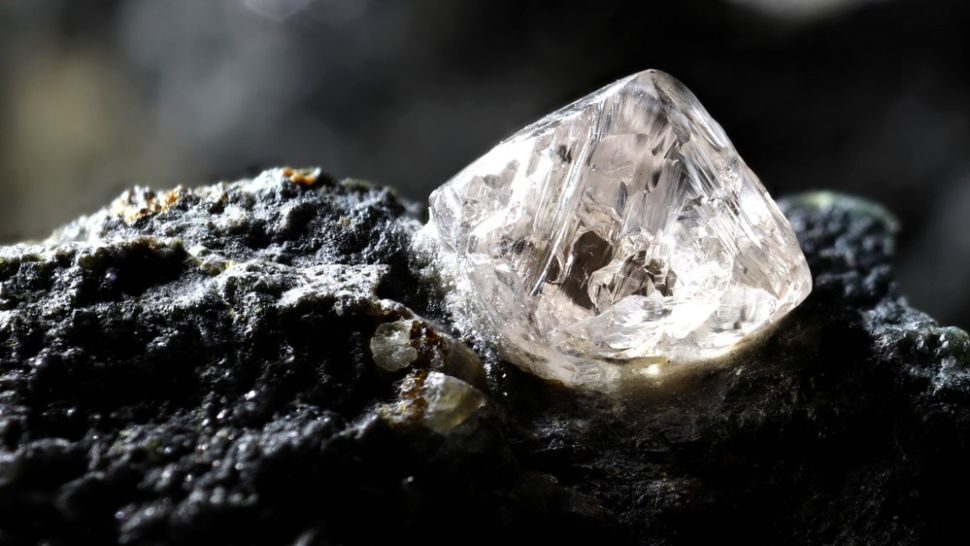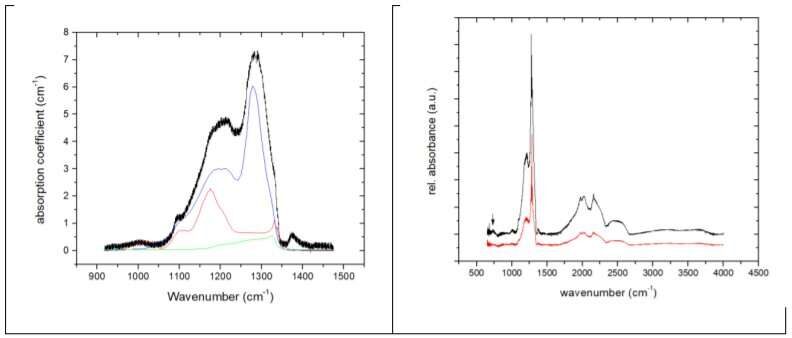
© ShutterstockResearchers discovered the mineral davemaoite inside a diamond that was formed in Earth's mantle.
A team of researchers affiliated with a host of institutions in the U.S. has found a sample of a mineral previously believed to be unable to exist in nature. In their paper published in the journal
Science, the group describes their study of a diamond found in Orapa, Botswana and the mineral specks they found trapped inside. Yingwei Fei with the Carnegie Institution for Science has published a Perspectives piece in the same journal issue outlining the work by the team and explaining why the mineral find is important to geology.
In 1975, a team of researchers created what Fei describes as a "high-pressure phase of aSiO
3" — a mineral that had been theorized to exist, but only under certain conditions. To synthesize the mineral, the researchers had to place its building materials under high heat and pressure conditions. They noted that as soon as the pressure was relieved, the mineral immediately changed to a form of glass. This finding suggested that it was not likely that the mineral could exist in nature. That assumption has now been proven wrong, as the diamond found in Botswana contained three tiny samples of it.

© Oliver Tschauner et alInfrared spectrum of N-defect related absorption bands. Blue: A-type defects, red: Btype defects, green: D-type defects. Right panel: Spectrum of diamond at location of davemaoite (black) and reference spectrum taken 50 micrometer afar (red). The spectra were offset and rescaled. The arrow indicates the principal absorption band of davemaoite that is not observed in the reference spectrum.
Because the mineral, now called calcium silicate perovskite, can only form under extreme heat and pressure conditions, the researchers suspect the specks they found in the diamond had to form deep below the Earth's surface — perhaps as far down as 660 to 900 km. They note that calcium silicate is found in multiple forms, one of which is wollastonite — a mineral found in the Earth's crust. They note also that material in the crust and mantle moves between the two because rocks are pushed around by plate tectonics. Prior research has shown that as they move, minerals in the rocks often undergo transformations, but some become trapped in diamond.
Diamond is a sort of base material; once conditions arise for its formation, the resulting diamond remains intact regardless of what goes on around it. The researchers suspect a form of calcium silicate (such as wollastonite) found itself in just the right conditions to form
calcium silicate perovskite far below the surface and shortly thereafter found itself surrounded by carbon that was in the process of being pressed into a diamond. After that, the material surrounding the diamond carried it upward until it reached the surface, where it was found. The researchers have named it "davemaoite," after noted geologist Ho-Kwang "Dave" Mao.
More information: Oliver Tschauner et al, Discovery of davemaoite, CaSiO
3 -perovskite, as a mineral from the lower mantle,
Science (2021).
DOI: 10.1126/science.abl8568





Given not all landscapes contain the same geological ingredients (for want of a better word) and not all volcanoes are the same, it is reasonable to deduce that such minerals / by products that make the surface can have a variable theme, including diamonds.